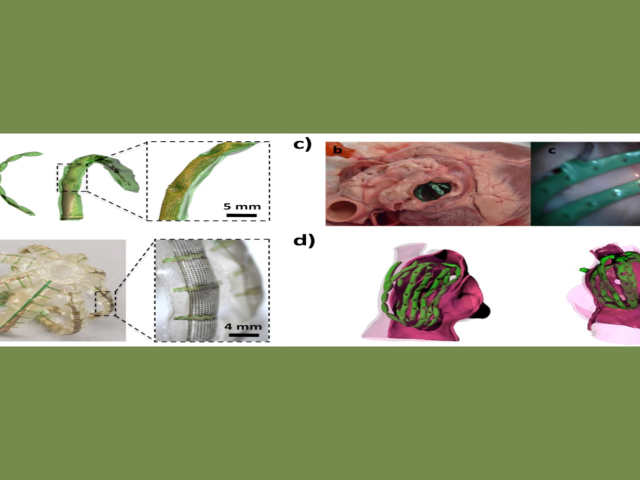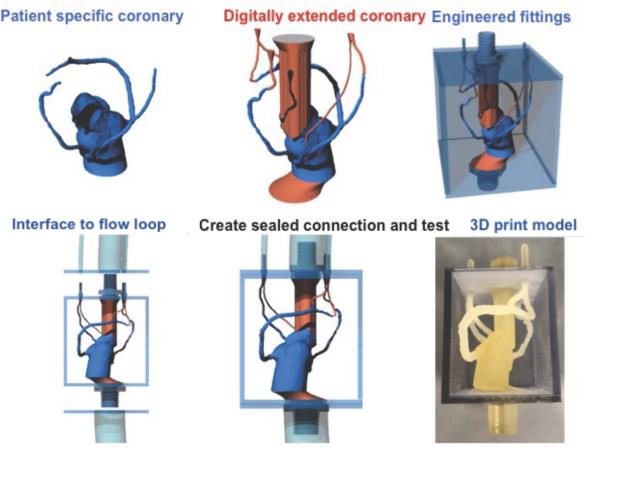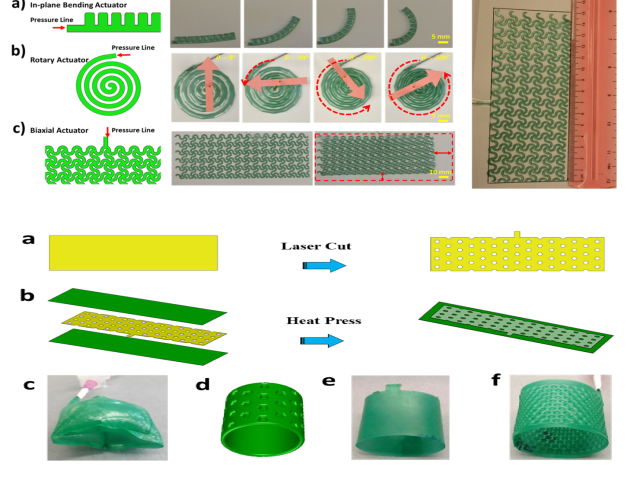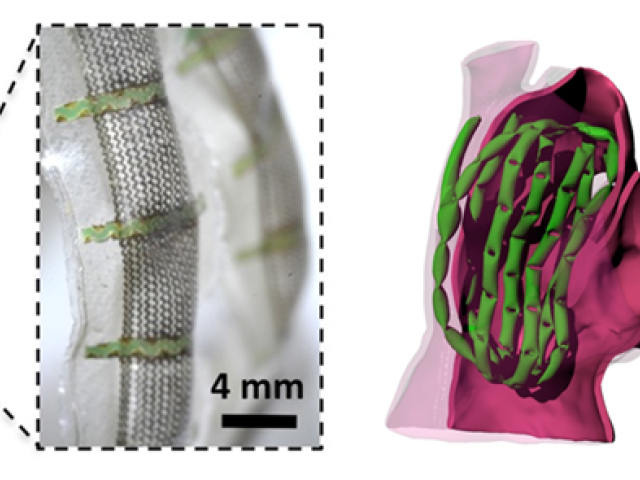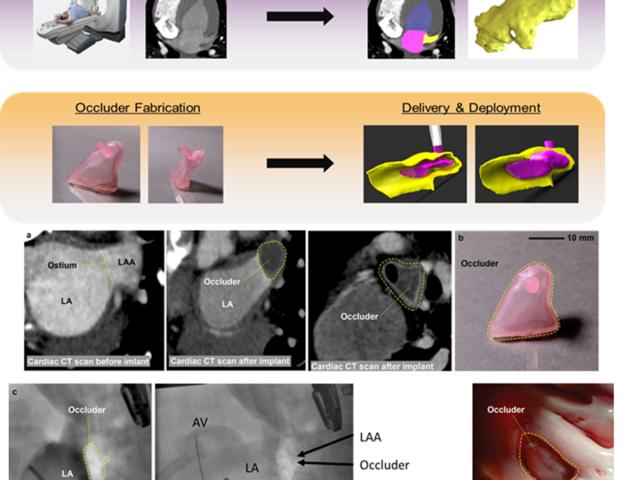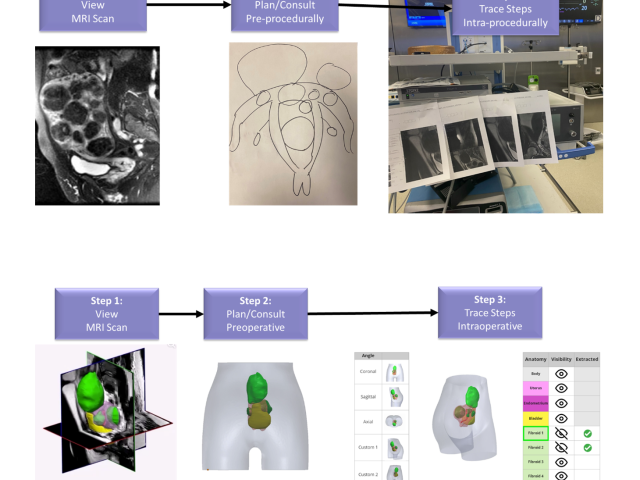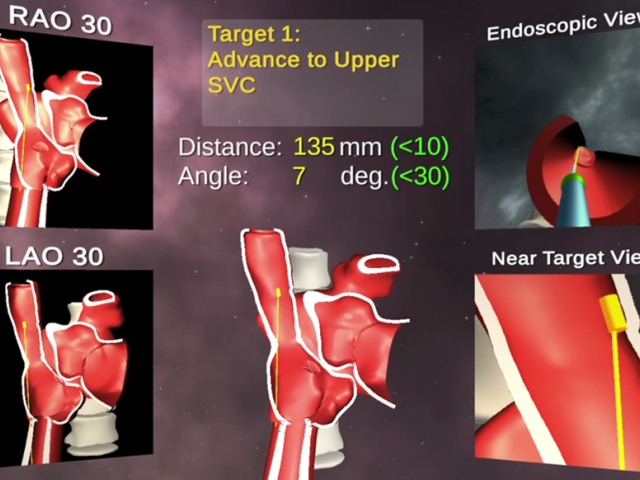Soft robotics sensing arrays for mapping cardiac arrhythmia
Atrial Fibrillation and Unstable Cardiac Arrhythmia: Atrial fibrillation (AF) is a significant problem for the health care community. The most common cardiac arrhythmia, it impacts more than 35 million individuals worldwide. In this disorder, complex and aberrant electrical signals override normal cardiac electrical signals, causing the left atrium to contract rapidly and asynchronous to the...
Soft robotic sensor arrays for semiautomated intubation procedures
Intubation Procedures: For patients with obstructed airways or difficulty breathing, intubation is a lifesaver. Roughly 50 million intubation procedures are performed each year. In this procedure, a physician or emergency medical service (EMS) worker guides an endotracheal tube down the airway of the patient to maintain the ability to breathe. Especially for patients with obstructions or...
Patient-specific coronary 3D printing for evaluation of coronary ischemia
Coronary Ischemia, when to intervene? Coronary Artery Disease impacts more than 18 million worldwide and was responsible for ~350,000 deaths in 2019. In the case of coronary ischemia, where coronary stenosis results in reduced blood flow to the myocardium, one challenge is determining when disease is severe enough to warrant intervention (e.g., stent, bypass, angioplasty). Today, the gold...
Soft robotic cardiac stents, valves and pumps
Heart disease is the top U.S. cause of mortality, with 600,000 deaths annually. Its high prevalence is responsible for 1/6 of health care costs, which in 2010 were some $444 billion. Implantation of cardiac devices (pacemakers, heart valves, grafts, pumps) is the primary method of treatment for many cardiac diseases (coronary heart disease, atrial fibrillation, heart failure) due to the...
Prototype development and validation of soft robotic sensor arrays for mapping cardiac arrhythmia
Award or Grant: National Heart Lung and Blood Institute (NHLBI), 1 R61 HL156153-01 (2021-2023)Prior Associated Grant: Non-occluding Zero-Thickness Inflatable Sensor Arrays for Conformable Mapping and AblationThis project aims to develop and test a highly novel multi-electrode balloon catheter for acquiring whole chamber cardiac electrograms for atrial fibrillation (AF) with unprecedented fidelity...
Patient-specific left atrial appendage (LAA) occluder
The goal of this project was to develop a patient-specific occluder for the left atrial appendage (LAA), as a stroke prevention device for atrial fibrillation (AF) patients. The lab developed a workflow to design and fabricate personalized devices using 3D printing. AF, which promotes blood clots, increases stroke risk five to seven times over. Warfarin, an oral anti-coagulant, is the mainstay of...
Mixed reality patient counseling/surgical guidance for uterine fibroid treatment
Most benign tumors are uterine fibroids in women, especially African American women. Today, doctors counsel women using flat magnetic resonance imaging (MRI) images, but fibroids can grow on multiple uterine planes, and 2D imaging does not accurately allow optimized planning and intraoperative guidance. Our technology brings MRI into the modern age by leveraging deep learning algorithms to...
Real-time navigation system for cardiac interventions
The overall goal of this project is to develop a mixed reality (MR) and deep learning (DL)-based system for intra-operative image guidance for interventional procedures conducted under fluoroscopy. This unique guidance system will offer both a quantitative, and intuitive, method for navigating and visualizing percutaneous interventions by rendering (via MR headset) a true 3D representation of the...



